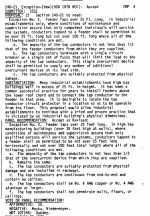We are installing an industrial machine that I have a question about. I’ve been asked to review the contractor’s proposal which is this:
Currently there is a 600 amp 2-wire, 480 volt panel fed from a 600 amp breaker in a 1200 amp switchgear. The conductors are parallel 350’s in two conduits (I am unsure if there is a neutral and I don’t know the EGC size but let’s assume it’s compliant). The panel is very lightly loaded, probably less than 50 amps at any time. I’ve not been able to find out yet if the panel is an MLO or main breaker. The contractor is proposing to remove one set of conductors from the 600 amp panel and reroute them to a 400 amp fused disconnect with 350 amp fuses, then feed the new equipment from the disconnect.
I haven’t opened a code book in a few years so this is a ways out of my wheelhouse. I don’t see this as code compliant unless there is a 350 amp or smaller main breaker in the 600 amp panel.
This will not likely be inspected but I need it to be a safe installation regardless. I’d welcome any help on this.
Currently there is a 600 amp 2-wire, 480 volt panel fed from a 600 amp breaker in a 1200 amp switchgear. The conductors are parallel 350’s in two conduits (I am unsure if there is a neutral and I don’t know the EGC size but let’s assume it’s compliant). The panel is very lightly loaded, probably less than 50 amps at any time. I’ve not been able to find out yet if the panel is an MLO or main breaker. The contractor is proposing to remove one set of conductors from the 600 amp panel and reroute them to a 400 amp fused disconnect with 350 amp fuses, then feed the new equipment from the disconnect.
I haven’t opened a code book in a few years so this is a ways out of my wheelhouse. I don’t see this as code compliant unless there is a 350 amp or smaller main breaker in the 600 amp panel.
This will not likely be inspected but I need it to be a safe installation regardless. I’d welcome any help on this.


